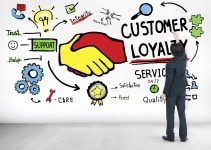Every organization understands that acquiring the best people and developing and retaining them is critical to gaining a competitive advantage. Companies are looking to leverage HR assessments to create synergies between talent acquisition and development initiatives. Yet, several businesses struggle to use these tools effectively for their unique business needs. This article highlights basic concepts about HR assessment tools that can add tremendous value to your selection and development process.
1. Understand the four V’s – Vision, Validity, Verification, and Value
There’s a wide range of HR assessment tools, methods, and strategies you can use to evaluate your candidates’ competencies with a high level of precision. Selecting the right one depends on your recruitment and talent development needs. Applying the four V’s to understand the various methods and options will add practical tools to your program.
- Vision. Think more critically about why you are using a particular assessment tool. Is it because it’s cheap and easy, or because everyone is using it, or are you clear about what you are trying to achieve with the tool? Once your objectives are clear, you can determine how to best integrate data from assessment tools that directly correlate with your business goals.
- Validity. Simply put, an assessment is valid if it satisfies its objectives. Whatever assessment tools you are using, ensure that what you are measuring directly correlates to the outcomes you wish to improve.
- Any assessment test must be verified and be reliable. For example, if a person retakes the test, will the tool give a similar or much different score in the future? A test that yields similar scores for a person who repeats the test can measure a characteristic reliably.
- Evaluate if assessment results helped you identify strengths and development areas for recruits or current team members.
2. Use suitable HR assessments to make better hires and develop your workforce
HR assessment tools can help you make better hires by evaluating applicants’ hard skills, behavior, attitude, and working style and finding the perfect match for the role you’re looking to fill. At the same time, use assessments to support other HR development functions, including:
- Job Analysis and Recruitment: Using assessment tools, you can match a candidate’s skill level to the essential functions of the job role. Furthermore, you can identify if the behaviors come naturally to the candidate or require more energy, focus, and support.
- Succession planning: Assessment data can help identify strengths and limitations when current role performance data may not provide all the information required to predict future success.
- Identifying emerging talent: A psychometric assessment looks beyond current performance and evaluates other factors that predict high potentials, such as ability, aspiration, and engagement. Once future leaders are identified, development experiences can be tailored based on the recommendations of the talent assessments.
3. Create a competitive advantage with learning and development initiatives
A 2021 survey reported that employees would be more likely to stay at their current jobs if they were offered development training. Training has improved job satisfaction and employee intention to stay at a company. It directly impacts motivation, which reduces employee turnover and increases productivity. Assessment results can give insight into your team’s strengths and development needs, enabling your organization to design strategic, need-based, and customized training and development programs.
Conclusion
While HR assessments are known to help with the hiring process, data gleaned from assessments can also support internal and external benchmarking and the analysis of talent supply and demand. This Valentine’s Day, make sure you’re using objective assessment methods to provide a valuable source of information on strengths, development needs, and limitations at the individual or group level, enabling your organization to design strategic development initiatives and resources for maximum effectiveness.




